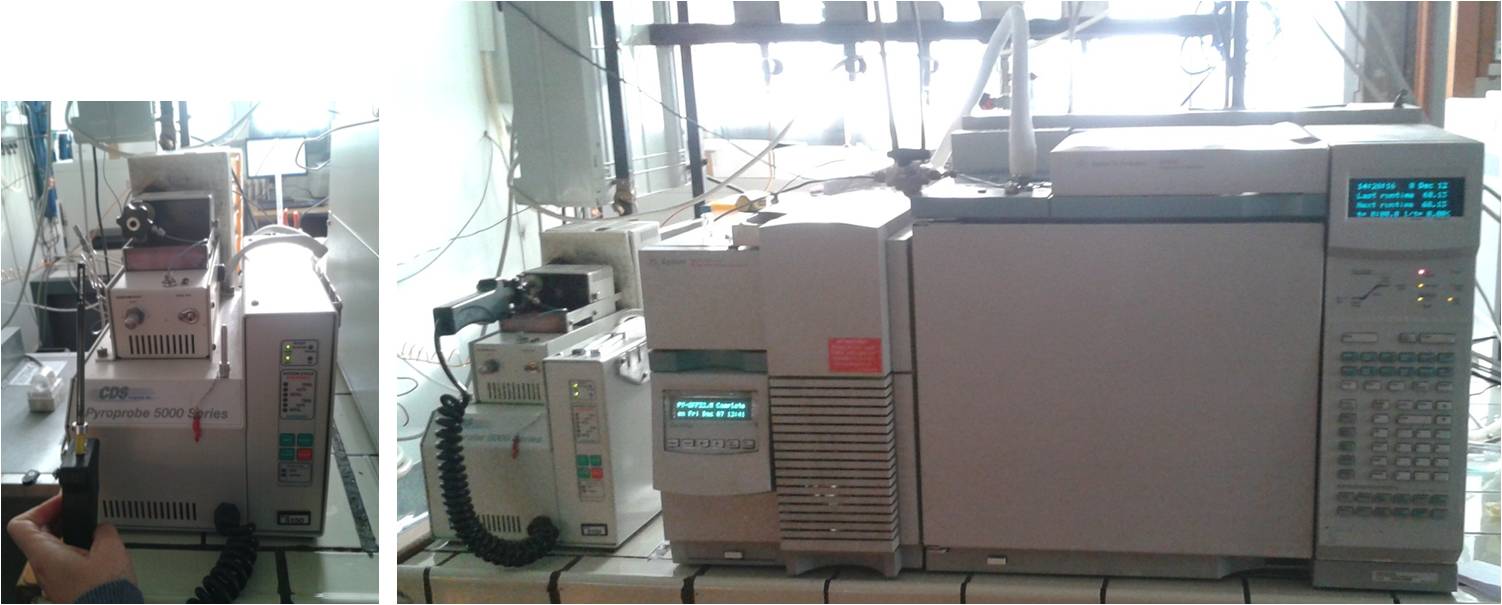 Most of the organic materials used in works of art are characterized by a macromolecular nature: in some cases they are natural polymers (such as proteins or plant gums), others undergo oligomerisation or cross-linking reactions as an effect of exposure to light and air (such as natural resins or drying oils). Due to their macromolecular nature, analytical pyrolysis is a fast and efficient approach for identifying such organic materials. Directly coupling of the pyrolyser to the injection port of a GC/MS is the most straightforward configuration of the pyrolysis systems. In fact, coupling the diagnostic power of mass spectrometry with the separation capability of the gas chromatographic system enhances the potential of pyrolytic methods. Although the chemical structure of the molecules originally present in the sample is not always straightforwardly related to the final pyrolysis products, pyrolysis is a valid fingerprinting technique.
Most of the organic materials used in works of art are characterized by a macromolecular nature: in some cases they are natural polymers (such as proteins or plant gums), others undergo oligomerisation or cross-linking reactions as an effect of exposure to light and air (such as natural resins or drying oils). Due to their macromolecular nature, analytical pyrolysis is a fast and efficient approach for identifying such organic materials. Directly coupling of the pyrolyser to the injection port of a GC/MS is the most straightforward configuration of the pyrolysis systems. In fact, coupling the diagnostic power of mass spectrometry with the separation capability of the gas chromatographic system enhances the potential of pyrolytic methods. Although the chemical structure of the molecules originally present in the sample is not always straightforwardly related to the final pyrolysis products, pyrolysis is a valid fingerprinting technique.
The technique involves minimal sample manipulation and no sample pre-treatment, thus reducing the problems of contamination and sample loss associated with wet-chemical procedures. It simultaneously provides evidence of synthetic polymers and natural materials such as lipids, resinous materials, polysaccharides and proteins. With the exception of some synthetic polymers (such as acrylic polymers), paint materials under pyrolysis produce polar, low volatile molecules, which need thermally assisted in situ derivatisation, in order for them to be efficiently revealed through GC/MS.
In this research we use both a filament and a furnace pyrolyser performing derivatisation in situ of the sample with silylating agents.
References:
I. Bonaduce, A. Andreotti, in Organic Mass Spectrometry in Art and Archaeology, M.P. Colombini, F. Modugno editors, Research Signpost, Wiley Publication, 2009, 303-361.
